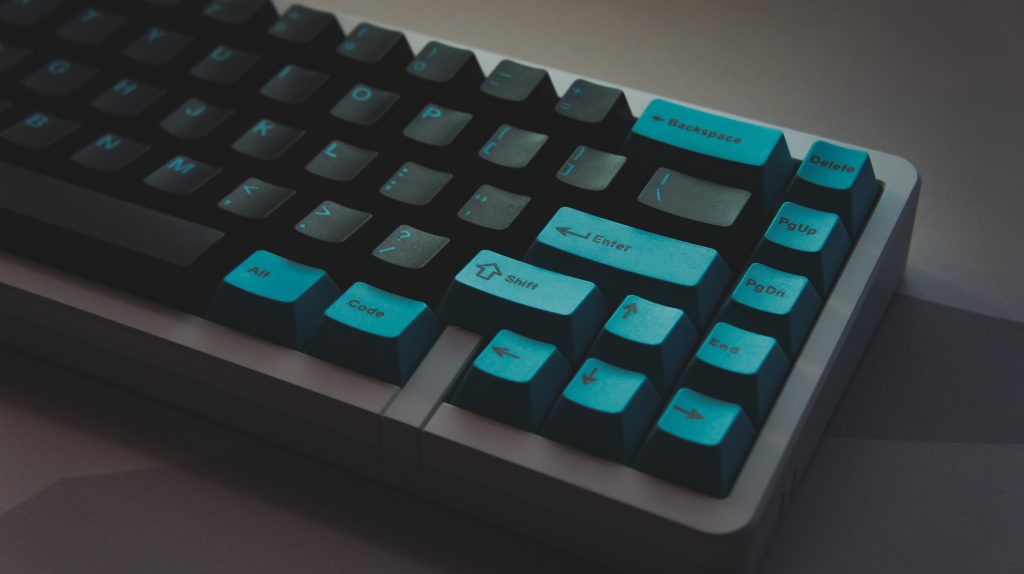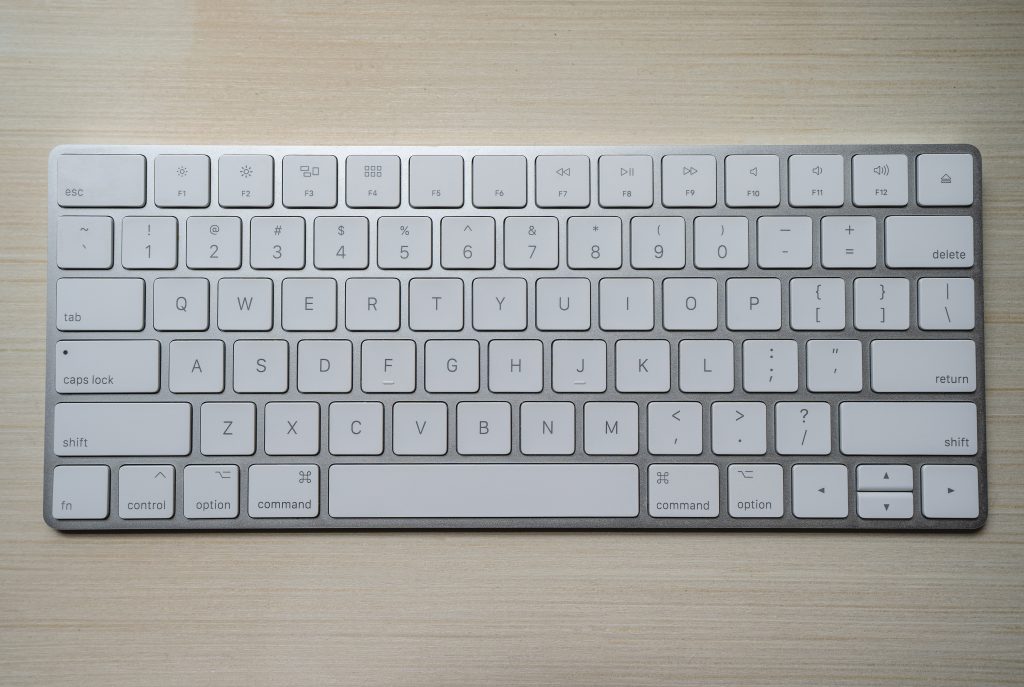In our increasingly digital age, keyboards have become ubiquitous. Yet, have you ever stopped to question, “Why are letters on a keyboard mixed up?” It’s a curious arrangement, indeed. Why isn’t it just alphabetical? This seemingly strange pattern, known as the QWERTY layout, is not a product of randomness. Instead, it’s a fascinating tale steeped in history, practicality, and human behavior.
As we journey through this article, we’ll explore the reasons behind the design of our daily typing tool. We’ll dive into the origins of the QWERTY layout, look at alternative designs, and examine how our keyboards might evolve in the future.
By the end, you’ll gain a new appreciation for the device under your fingers, understanding that every key has its place not merely by chance, but due to a blend of historical circumstances and practical necessities. Join us as we take a closer look at keyboards, unraveling the mystery of their mixed-up letters.

The Birth of QWERTY
The story starts in the 19th century with a man named Christopher Sholes. Known as the father of the typewriter, Sholes was faced with a mechanical issue: the typewriter keys would jam if neighboring keys were hit in quick succession.
So, he and his team came up with the QWERTY layout, specifically designed to prevent this problem. The most commonly used letters in the English language were spaced apart to avoid jams, resulting in the quirky QWERTY layout we use today.
The Advent of the Computer Keyboard
As we fast forward to the computer keyboard evolution, the QWERTY design stuck. Not because of mechanical jams, but because it was familiar. The typists of the day were already accustomed to QWERTY, so it was easier for computer keyboards to adopt the same layout rather than retrain everybody.
Alternatives to QWERTY
QWERTY’s reign is not unchallenged. The Dvorak Simplified Keyboard, invented by Dr. August Dvorak and his brother-in-law, Dr. William Dealey, in the 1930s, aimed to increase typing efficiency. They rearranged the keyboard to place the most used letters on the “home row,” where the fingers rest, minimizing finger movement and purportedly increasing typing speed.
However, despite its promise, the Dvorak layout has never been widely adopted, primarily due to the learning curve involved in switching from QWERTY.
AZERTY and Others: The International Scene
Globally, the keyboard landscape varies. France and Belgium, for example, primarily use the AZERTY layout, which accommodates special characters in the French language.
Germany uses the QWERTZ keyboard, which swaps the Y and Z from the traditional QWERTY layout, reflecting the frequency of ‘Z’ in the German language.

The Key Jamming Problem and Efficiency of Keyboard Layout
In modern times, the key jamming problem is no longer an issue. With digital keyboards, there are no mechanical parts to get stuck.
Some argue that we should rearrange the keys in a more efficient layout, given that our current design is based on outdated mechanical requirements. However, the momentum of tradition is hard to overcome. Many of us have spent years, if not decades, mastering the QWERTY keyboard.
Keyboards and Ergonomics
While we’re on the subject, let’s not forget keyboards and ergonomics. QWERTY was not designed with ergonomics in mind. To address this, various ergonomic keyboards have been designed, some of which retain the QWERTY layout, while others opt for radically different designs.
Understanding Keyboard Letters and the Sequential Keyboard Layout
You might also wonder why we don’t simply arrange the keyboard alphabetically. Would that not make more sense? The answer lies in typing speed.
An alphabetical keyboard layout might be easier to learn initially, but it wouldn’t be faster. It would require more finger movement than the QWERTY design, which strategically places the most commonly used keys under the strongest fingers and spreads the typing load across both hands.
Read More: Best One Handed Gaming Keyboard – Review & Buying Guide
Looking Forward: The Future of Keyboards
So, what does the future hold for our beloved keyboards? As voice recognition and swipe technology continue to evolve, the future of the keyboard may not be in the keys at all.
But for the foreseeable future, it seems the QWERTY design is here to stay. Its design quirks, born of necessity, have become ingrained in our typing habits. It’s a fascinating glimpse into our technological history, reminding us of the path we’ve traveled from typewriters to touch screens.
So next time you sit down to type, take a moment to appreciate the historical journey under your fingertips. The jumbled letters on your keyboard are a testament to practical design and the power of tradition.
The Science of Speed: Unearthing the Efficiency of Keyboard Layout
Given that efficiency of keyboard layout is a major factor in typing speed, it’s worth digging a little deeper into the science behind it.
One of the keys to QWERTY’s design was the balance it achieved between the hands. Despite the right hand being dominant for most people, Sholes designed the keyboard so the left hand does most of the typing. This is due to the frequent use of vowels, most of which are typed with the left hand.
If we were to switch to a more intuitive or alphabetical layout, it might become harder to type quickly. In QWERTY, the most common letters are spread across the keyboard, enabling us to type with both hands simultaneously, increasing our speed.

An Exploration of Other Keyboard Designs
Other keyboard designs have surfaced over the years. For example, the Maltron keyboard uses a unique 3D design, with keys arranged in a semi-sphere to reduce finger and wrist movement. This keyboard also includes separate keys for ‘E’ and ‘T’, the most commonly used letters in English.
Similarly, the Colemak keyboard layout retains much of the QWERTY layout, but rearranges some keys to reduce finger travel distance.
These innovative designs, while having their benefits, have not gained widespread adoption. Once again, the QWERTY layout’s entrenchment proves a formidable barrier.
The QWERTY Legacy: A Lesson in Enduring Design
As we wrap up our journey into the world of keyboards, it’s worth reflecting on the enduring legacy of the QWERTY design.
In a way, its resilience is a testament to its strength as a design solution. Despite being over a century old, it remains relevant and effective in a world far removed from its creation.
Sure, it may not be the most efficient design, and it’s certainly not the most intuitive, but it works. And its quirks and peculiarities have become part of its charm.
So next time you’re typing away at your keyboard, take a moment to appreciate the story behind its design. It’s a journey through history, technology, and the fascinating complexities of human behavior.
At the end of the day, understanding why keyboard letters are mixed up takes us back in time, to the birth of the typewriter and the dawn of a new era of communication. And it also allows us to look forward, to the possibilities of what may come next in our never-ending quest for better, faster, more efficient ways to communicate.
Conclusion:
The mixed-up letters on our keyboards are an intricate tapestry of history, design, and tradition. From its inception with Christopher Sholes to prevent mechanical jams, the QWERTY layout has ingrained itself into our typing culture. Its endurance has weathered the digital revolution, alternative designs, and international variations.
Although no longer relevant for mechanical reasons, its familiarity and practicality in distributing typing across both hands ensure its dominance. Innovations like the Dvorak Simplified Keyboard, ergonomic designs, and region-specific layouts like AZERTY and QWERTZ provide fascinating insights into our ongoing quest for efficiency and comfort. While alternative designs propose various advantages, none have yet surpassed QWERTY’s widespread acceptance.
Ultimately, our keyboards are more than just tools; they’re a testament to our technological journey, shaped by practical challenges, human behavior, and a steadfast resistance to change.

Experience is what matters at the end!!
Hi! This is Jacob Jay – founder of Keyboardgear.com! From childhood to adulthood, I’ve always remained passionate about IT, and the revolution in this industry, especially gaming on the PC can’t go out of my way. Since I’m an enthusiastic gamer, and I love to experience various gaming accessories, particularly mechanical keyboards, that really boost my gaming adventure manifolds. So, my nerve cells hit me to transfer my experiences into word form and share with others to identify the ideal keyboards perfectly fit for their gaming modes.
I know very well how hard it is to find the high-quality items available on the internet that ought to be exactly the same as seen as on the screen. But the counterfeiters have ruined the user’s trust. As I have passed all such situations, I’m obliged to deliver the genuinity and express the same as what I am saying.
So, now, I’m working on the mission to provide very helpful and frankly but trustworthy reviews and guides about various mechanical keyboards, mouses, and other gaming accessories as per my personal experiences and sound knowledge.
